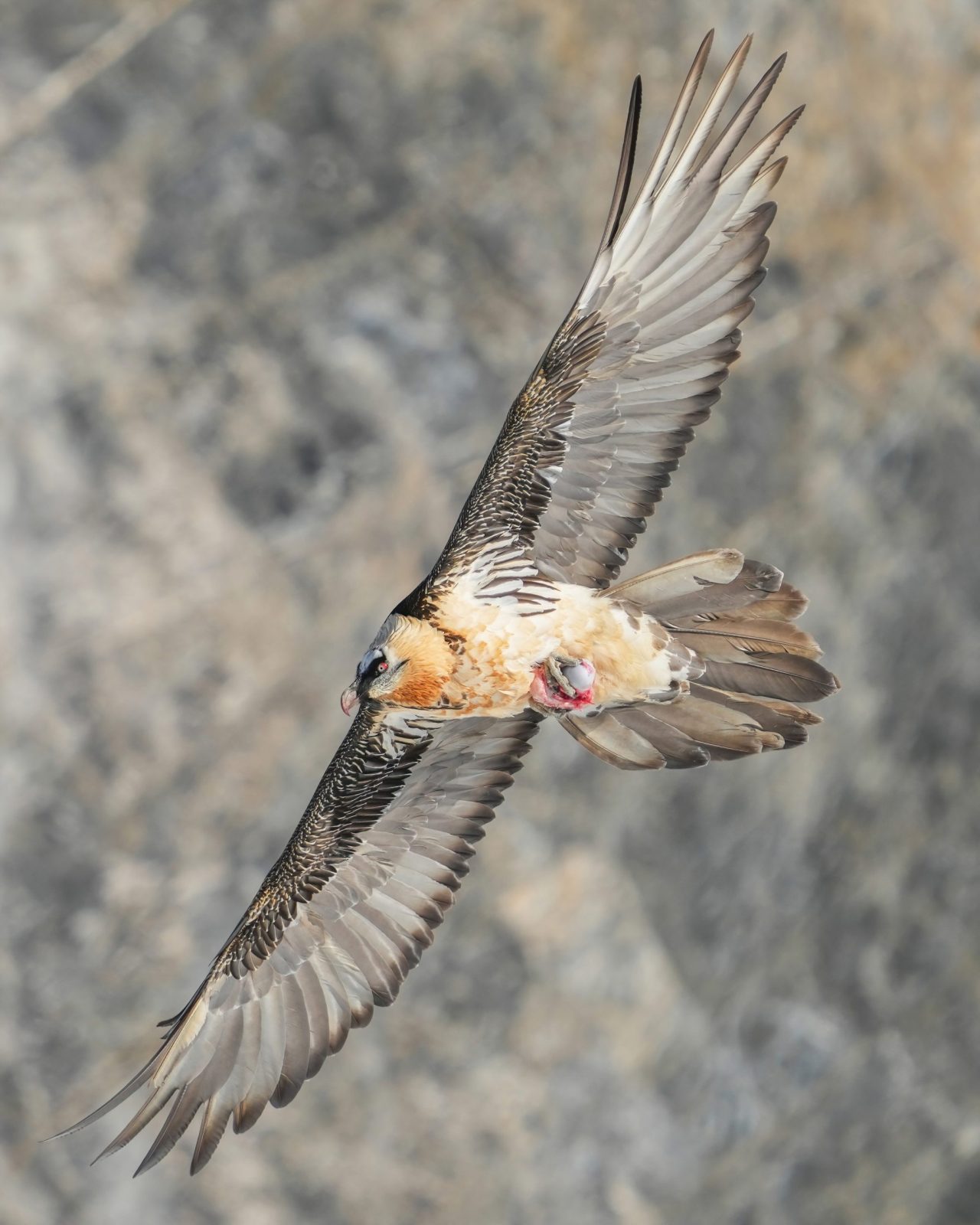
Bearded vulture

The bearded vulture, also known as the lammergeier and ossifrage, is a very large bird of prey in the monotypic genus Gypaetus. Traditionally considered an Old World vulture, it actually forms a separate minor lineage of Accipitridae together with the Egyptian vulture, its closest living relative. It is not much more closely related to the Old World vultures proper than to, for example, hawks, and differs from the former by its feathered neck. Although dissimilar, the Egyptian and bearded vulture each have a lozenge-shaped tail—unusual among birds of prey. It is vernacularly known as Homa, a bird in Iranian mythology.
The bearded vulture population is thought to be in decline; in 2004, it was classified on the IUCN Red List as least concern but has been listed as near threatened since 2014. It lives and breeds on crags in high mountains in Iran, southern Europe, East Africa, the Indian subcontinent, Tibet, and the Caucasus. Females lay one or two eggs in mid-winter that hatch at the beginning of spring. The bearded vulture is the only known vertebrate whose diet consists of 70–90% bone. It is 94-125cm long and with a wingspan of 2.31m-2.82m.
Two subspecies are recognised:
- G. b. barbatus (Linnaeus, 1758) (includes hemachalanus and aureus) – south Europe and northwest Africa to northeast China through the Himalayas to Nepal and west Pakistan
- G. b. meridionalis Keyserling & Blasius, JH, 1840 – southwest Arabia and northeast, east, south Africa
Unlike most species of vulture, this one has feathers covering its head.
Given its huge range, general numbers for the whole population are both hard to come by, and relatively useless.
Conservation is hard to work out overall, as each individual country appears to need to have separate policies.










